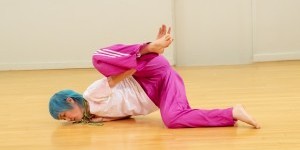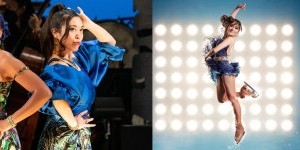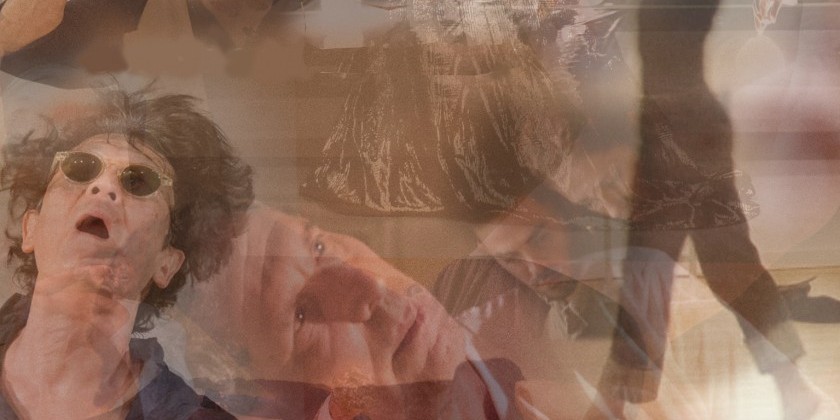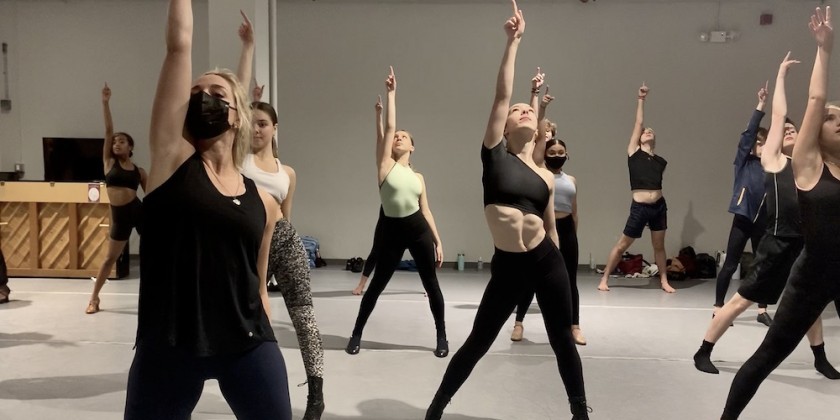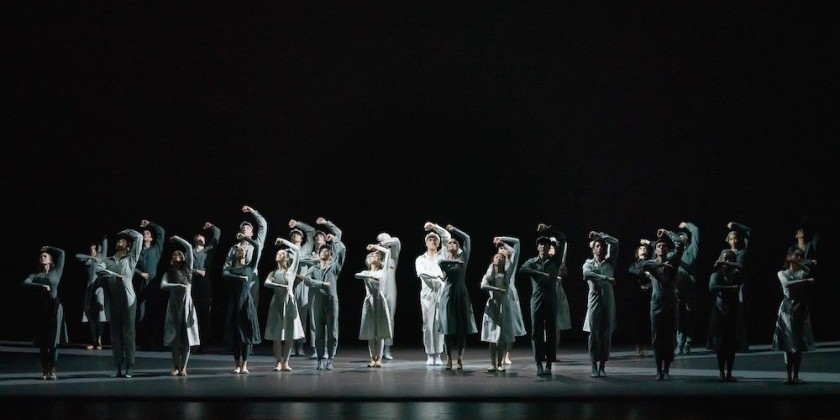
DAY IN THE LIFE OF DANCE: Tapper Michelle Dorrance Makes Broadway Debut Choreographing LSD-Themed Musical "Flying Over Sunset” by MOVING VISIONS Editor Lisa Jo Sagolla
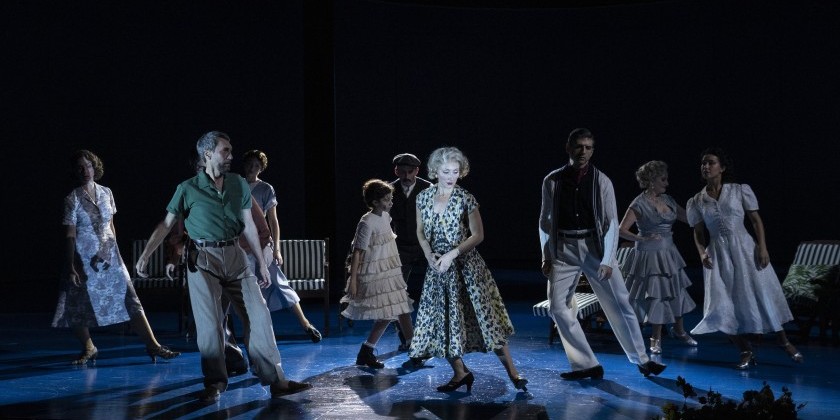
Flying Over Sunset
Direction: James Lapine // Choreography: Michelle Dorrance
Lyrics: Michael Korie // Music: Tom Kitt
Cast: Carmen Cusack, Kanisha Feliciano, Harry Hadden-Paton, Nehal Joshi, Emily Pynenburg, Michele Ragusa, Robert Sella, Laura Shoop, Atticus Ware, Tony Yazbeck
Lincoln Center's Vivian Beaumont Theater through February 6
For more information and tickets, click HERE
“There’s something really moving about tap dance, and percussive dance in general because it is simultaneously movement and music. It speaks to a deeper feeling, or deeper understanding of ourselves,” said tap dance luminary Michelle Dorrance, a 2015 MacArthur “Genius Grant” awardee. So perhaps it’s no wonder director James Lapine chose Dorrance to create tap choreography for his new LSD-themed Broadway musical, Flying Over Sunset. Playing at Lincoln Center’s Vivian Beaumont Theater through February 6, the show weaves a fictionalized narrative out of the experiences of three real-life personalities – film star Cary Grant, author/philosopher Aldous Huxley, and Conservative politician and writer Clare Boothe Luce – all of whom took LSD in the 1950s (when the drug was legal) to deepen comprehension of their personal conundrums and the larger enigmas of life. “This isn’t the LSD of the 1960s. They didn’t take it for a good time on a weekend. They took it to deeply investigate themselves or to learn something,” Dorrance explained, speaking by telephone in December, during the show’s preview period.
.jpg)
“I have been exploring with the full cast in what I would call pedestrian percussive composition,” she said. While Dorrance sometimes employs traditional tap choreography in sequences depicting the LSD trips, specifically those of Cary Grant — portrayed by accomplished Broadway dancer Tony Yazbeck, in the present, and expert young tapper Atticus Ware, in Grant’s childhood memories – throughout the show, innovative use is made of ensemble percussive-movement passages to serve as “connective tissue” between scenes, transitioning the action from one place to another. In these passages, out of the footfalls of pedestrian walking steps that build in complexity with the gradual addition of brushing sounds, stomps, squats, leg lifts, or rhythmic patterns, Dorrance creates an evocative sonic environment for the story. It’s an unusual display of the aural power of choreography as a dramatic element in a musical – dance being an element typically appreciated for the animated visual aesthetic it brings to a show. “Those group percussive pieces live within a liminal space, in the characters’ subconscious. It’s what’s behind their actions. It’s sort of an existential space, the intangible space of thoughts and feelings,” said Dorrance.

A celebrated concert-dance artist, Dorrance performed with numerous tap companies, and has created work for American Ballet Theatre and Martha Graham Dance Company, as well as for her own troupe, Dorrance Dance. And now, with Flying Over Sunset, she is making her debut as a Broadway musical-theatre choreographer. Lapine, who also wrote the show, extended the invitation to Dorrance upon seeing her concert-dance choreography in a performance at The Yard on Martha’s Vineyard. “The show we were doing at the time was ETM: Double Down, which is the electronic music show where we trigger electronic sounds with our feet,” said Dorrance. “It was a collaboration between me and Nicholas Van Young. And it’s wild. Certainly not what a layperson who has never seen 21st-century tap dance performance would expect. And James told me he left the performance thinking, ‘well there’s a choreographer who could choreograph a show about LSD.’ James is someone who’s moved by non-traditional musical ideas and I appreciate that he saw tap dance as that element for his show.”

Working on a Broadway musical for the first time, Dorrance quickly learned how to adapt to a theatrical production’s rehearsal schedule, developed strategies for choreographing for non-dancers, and found herself intrigued and awed by her experiences exploring movement with actors. “I’ve been running my own company for ten years and not having my focus be the major focus was a challenge,” Dorrance admitted. “This show comes from the mind of James Lapine, and it’s brilliant because of that, but I am serving James’s vision. And that’s an incredible honor. But what I’ve realized – this being my first rodeo as far as Broadway is concerned – is that everyone has to fight for their time. I’ve learned to go, okay, these folks are going to be working on this scene for 15 minutes, so let me pull this other actor and his understudy and go over movement vocabulary with them for 15 minutes. I’ve learned how to steal folks away and work with them whenever I can. It’s all about trying to find time inside of non-existent time, time to clean, or to more deeply connect the actors to the material.”

Dorrance also evolved an efficient, three-category strategy for working successfully on movement generation with non-dancers. She explains: “Especially with folks who have varying degrees of comfortability with movement or making sound with their movement, I always walk in with a number of ideas to try. For example, for the Ent’racte, where you’ll see the kind of group percussive work I was talking about earlier, I played around with rhythmic ideas and kept finding myself in a 5/4 meter, so I developed a number of different walking patterns in 5/4 and a number of static patterns in 5/4. Then I taught each pattern to the cast, and saw what people were comfortable with – and I mean what they were comfortable adding their own character and personality to, because that’s how you can tell if it’s going to be successful. If they’re in their heads too much about it, it’s not going to communicate much to the audience. But if they can comfortably sit in it, we’re going to receive a little more truth. Then there might be other things I hear them doing that I know are really powerful, and are going to be worth the time to clean up or have them practice. So that’s essentially the process. I immediately say yep to these ideas, no to those, and not-yet-there-but-worth-working-on to others. I’ve learned that even with an idea I really love, if it looks like they’re in pain trying to do it, I just have to cut it.”

Yet even though they may be non-dancers, Dorrance learned, accomplished actors are often extremely attuned to their body movements and may need very little from a choreographer. “All of the actors in this production are physically so intuitive about their characters,” she said. “When their character was singing they knew exactly what to do with their bodies. Or their natural instincts were way better than something I was going to set on them, so I just got out of their way. And that was not only something great to learn, but a thrill to experience.”
.jpg)
Does that mean Dorrance would like to continue working in musical theatre, and with actors? “Absolutely,” she declared. “I feel a tremendous vote of confidence for actors who are not necessarily focused on dance. Even folks who are awkward, there’s something beautiful in that. It’s just an eccentricity, and I love leaning into people’s eccentricities. And I love that about tap dance – that it champions an individual voice, and the idea of individual voices moving together. If art is supposed to be this thing that brings out the higher versions of ourselves, I think bringing eccentric individual expressions together to be one is the most important thing we can do.”
Created in 2020 as a way to lift up and include new voices in the conversation about dance, The Dance Enthusiast's Moving Visions Initiative welcomes artists and other enthusiasts to be guest editors and guide our coverage. Moving Visions Editors share their passion, expertise, and curiosity with us as we celebrate their accomplishments and viewpoints.




